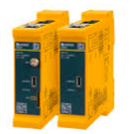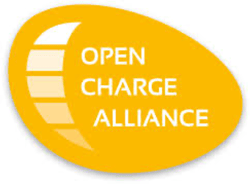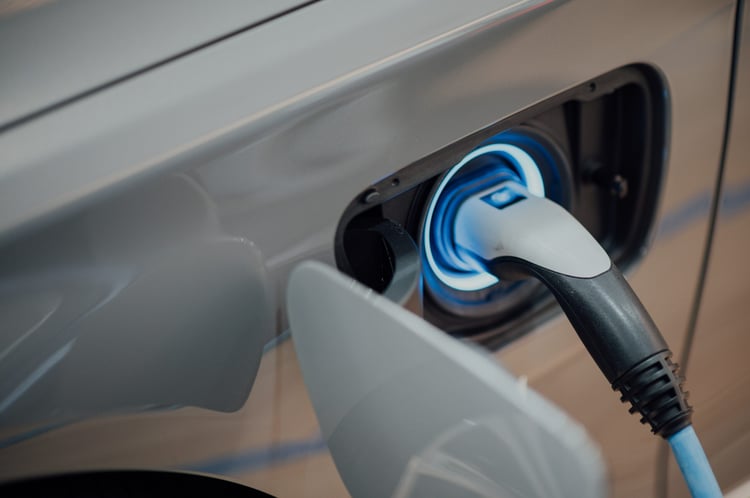What is a good EV charger?
In this post, I disclose the features that make a good electric vehicle (EV) charging device. I’ll dive a little deeper into the technology and finally will give you some pointers to consider when building EV charging networks.
I’m focusing more on charge points used in private charging services - basically AC chargers. However, we see also some small power DC units that are installed in these locations. Maybe more in the future.
This information is relevant to the providers of electric vehicle charging services to their customers (EV drivers). These providers are often called charge point operators and they can be energy companies, EV charging operators, hotels, supermarkets, facility management companies etc.
What is an EV charger?
EV charger is the unit that is used to charge electric vehicles’ batteries. It has several names like charge point, EVSE, wall box, charging station, socket, connector etc. We divide EV chargers into two categories:
- AC chargers, with max. 22kW power. These chargers provide alternating current (AC) to the EV.
- DC chargers are sometimes also referred to as high power, fast or rapid chargers. DC chargers can provide up to 350kW power. These chargers provide direct current (DC) to the EV.
So, we have two types of charging technology in the field. AC is where the EV battery is charged by the car, and DC is where the conversion of the electric grid alternating current to direct current is done by the electric vehicle charger. There are also DC chargers with lower power ratings ex. 20kW but I’m not focusing on the DC technology that much in this post.
About AC chargers

The AC charger is communicating with the electric vehicle (EV) using a standard called IEC61851. The main function of an AC charger is to provide electrical safety features between the vehicle and the electrical grid. So, in plain terms, an AC charger is an advanced electric switch with built-in safety mechanisms and advanced services and features are provided by the EV charging platform.
It is important to understand that the most advanced features of electric vehicle charging service lay in the EV charging platform and the charger is simply following the commands delivered by the EV charging platform.
AC Charger consists of the following overall components.
Housing, the outer casing of the unit.
The strength of the housing is measured with an IK-value. This stands for impact protection and the value range is from 0-to 10 (where 10 is the best protection). For EV Chargers the minimum value should be IK08, but in many cases, manufacturers produce IK10 units.
The water and dust resistance of the casing is measured with an IP value. This stands for ingress protection and the value is two-part. The first digit stands for protection against solid particles like dust and the second is for liquids like water. The range is from 0-to 9 but there are also additional markings possible. More on that here
On EV Chargers I would choose a unit with an IP rating that is at least IP54, but you can install units with IP44 or indoor (parking halls) even lower.
The housing of the charger is also what affects most how easy the unit is to install. The housing dictates the mounting points for wall or ground installation. It also dictates the routing of the feeding cable from the electricity network into the charger.
Socket or fixed cable
In Europe, this is a Type2 socket or cable. You can select your product with a socket where the EV driver carries their cable with them and uses that to connect the car to a charger or fixed cable charger where no additional cable is needed driver just uses the cable attached permanently to the charger. Fixed cable is certainly more user-friendly and should be considered whenever possible.

"fixed cable is more user-friendly"
Controller unit of the charger
The controller is the brain of the unit. It is an electronic device that is communicating with the vehicle and at the same time commands the electricity on or off towards the vehicle.

Picture: Bender EV charging controller, also certified by eMabler
The controller unit is using an electrical device called a contactor to open and close the electric circuit towards the vehicle. These contractors can be a separate component in the charger, or they can be soldered directly on the circuit board of the controller.
The charger controller is also providing outbound connectivity for the charger. This means there is usually an internet connection capability from the controller. This is done either with ethernet, Wi-Fi or a 2/3/4/5G modem. However, many 2G (GSM/Edge) networks are soon phased out and therefore 4G is currently the best option - 5G likely in the future. This is also why many chargers have an antenna for wireless communication. Also, the accessibility of the ethernet connection connector is crucial when thinking about how easy the unit is to install.
Other electrical components
There are a few mandatory components that EV chargers need to have.
- One of these is the Residual Current Detection device (RCD). RCD has several types but in EV charging you need both type A and B protection. Type A is for human protection and it’s detecting leakage of more than 30mA AC currents and cutting the electricity flow if it detects one. Type B is more for protecting the car and other equipment as it’s detecting a DC leakage of more than 6mA. Type B detection is often built into the controller unit of the charger. Type A can be also inside the charger housing, but it is usually a separate component. If these components are not part of the charger those need to be installed separately into the electric cabinet or enclosure.
- An energy metering device is needed if you plan to invoice EV drivers based on energy consumption (some markets require an energy metering device in all public chargers). There is a directive in the EU for MID measuring instruments. In EV charging in most EU countries the good rule of thumb is to use chargers with a minimum of MID standardized energy measuring. This is most often achieved by placing a separate MID-certified energy meter into the unit and then reading the data thru the controller device to the EV charging platform. There are also exceptions like Eichrecht, which introduces more security on how the meter readings are transferred from the charger to the EV charging platform.
Charger connectivity
The chargers should provide a way of communicating thru an internet connection. There is standard wired connectivity like Ethernet wiring. If using wired connections on your chargers couple of rules to follow:
- Make sure you will not route your communication wires on the same conduit as your electrical wires. Electrical wires will generate magnetic fields that can generate interference on the network cables which leads to poor connection for the chargers.
- Use shielded quality CAT5 or above cables, especially on long routings.
- Make sure you don’t just open your local network to public internet by configuring the switches and routers properly. Use NAT in your local network and protect it with a router firewall.
You can also make the connection wireless with the chargers. Here are some rules to follow if using wireless communication like Wi-Fi and mobile data networks.
- Wi-Fi coverage should be good on all parts of the installation. If you just place a single base station in a garage it might not be enough for the most distant units. So, provide enough wired access points for all the chargers.
- It’s often good practice to create your Wi-Fi network for chargers with its channel. Sharing the Wi-Fi network for other devices might lead to interference and loss of connection for chargers.
- If using mobile data modems on the charger you need to also have SIM cards on the units. In addition to this of course an operator subscription. Make sure you don’t get a public subscription that would show up openly on the internet. This would be a security risk.
- It is a good practice to have APN (Access Point Network) from the operator and a SIM card management system if setting up several chargers with SIM card access.
- Also, Chargers might consume more than 100Mb of data a month if they need to be maintained (Firmware updated etc.) Make sure you don’t purchase a SIM card with data limits or that it would start to cost you more after ex. 100Mb. Consider using a machine-to-machine (M2M) data provider which often is more suitable for EV charging services.
- Finally, what goes to all wireless communication is possible interference. So, these are radio signals that are more acceptable to interference than in wired networks. If you want to make a stable wired network, make sure your charger's antenna is proper. A small antenna inside a metallic or even plastic casing of a charger right next to a cable feeding 32A current to a car will probably have some problems at some stages of its lifecycle.
Communication with an EV charging platform is done with a protocol called OCPP which stands for Open Charge Point Protocol. It has been developed by a consortium called Open Charge Alliance.

Although it’s a relatively widely used standard (as it has been adopted by the whole EV charging ecosystem) it has limitations. For example, it does not strictly describe charger configuration parameters. These types of things that are open for interpretation has led to the need for interoperability testing against charger manufacturer device and EV charging platforms.
Currently, the most popular OCPP variant is 1.6J, but soon, more EV chargers with OCPP 2.01 will arrive on the market. We work with different EV charger providers to ensure the chargers work properly with the eMabler API-First EV Charging Platform - now and in the future.
The connection of a charger to an EV charging platform starts by installing the unit and making proper wiring or wireless setup on-site. The second part is commissioning the unit. This consists of specifying to the device what connection method to use, Ethernet, Wi-Fi or mobile data networks. Then giving the device a unique ID for it to communicate with an EV charging platform and finally provides the EV charging platform endpoint URL for the charger to start the communication.
All this can be done on-site after the power has been connected to the unit. There are several ways different manufacturers provide access to make these settings. It can be a mobile app connecting to the unit with Bluetooth, or a web page you can access directly from the unit if you know what IP address it got from your network setup. You might need to connect a separate USB cable between your unit and a laptop, or you might need to use a dedicated application on your computer to do the commissioning setup.
Commissioning can also be done in the factory where the unit is produced. This requires some commitment from the manufacturer, as they need to place the settings on the EV charger at the factory. If commissioning is done on the factory only thing left on site is to connect electricity and communication.
The reality is that installing and commissioning the chargers is still complicated. It takes time and errors happen easily. This is an area where eMabler can substantially help its customers, partners and EV charger manufacturers.
"installing and commissioning the chargers is still complicated"
What makes a good EV charger?

End of this post I give you some pointers on what to look for when reviewing if a charger is good.
Ease of installation
Read the installation instruction provided by the EV charger manufacturer. This usually tells you much about how much time the manufacturer has spent thinking about the installation.
- If you have a demo unit and electrician at hand, do a demo installation. There are surprisingly big differences in the installation time, special tools and competence required.
- How is the wiring done into the unit, is there enough room for thick enough cable? Think how this works in the field where the surrounding is not optimal for installation.
- If any additional components are needed on to the electrical cabinet or a separate enclosure. These components will increase the cost and installation complexity.
Ease of commissioning
I would say that commissioning is currently the weakest link of most EV chargers. Commissioning often requires the use of a computer on the site, special competence and several parameters that can make the installation fail.
- What are the ways of changing the configuration parameters of the unit? Mobile app, web page etc. Sometimes manufacturers have a dedicated installation app, but we have found most of them useless and getting passwords and access to those complicated.
- Can you get the units with factory pre-commissioning to save installation time and reduce installation complexity?
eMabler has a Charge Point partner program that makes commissioning easier and faster.
Usability of the unit and its stability
This can be hard to estimate before the unit has been tested by us.
- The network connection and its stability. Most EV charging service errors relate to poor data connectivity.
- Does the manufacturer provide firmware updates regularly and how these are rolled out? We see too often EV chargers missing firmware updates after they are installed. Firmware updates are to improve charger reliability and introduce new features (also security). Some EV charger manufacturers do not even have an after-sales mentality. They just sell hardware. Watch out for these!
- Quality with the unit's software, strange messages, measurement values etc. Robust software and messages ensure the EV charger works properly and the billing data is accurate. This can be difficult to detect, but we investigate this during eMabler interoperability testing.
Price
Of course, the price of the unit plays a key role when comparing different manufacturers.
- Often with lower prices, you eventually end up losing some functionalities. So, plan carefully which features are important for your business and services – also in the future.
- However, one should remember that some chargers are more complicated to install and require more maintenance and therefore the OPEX cost should also be calculated. Not only the CAPEX.
Conclusion
There is a lot to consider when choosing EV chargers for your network. We often help Charge Point Operators to develop their long-term vision i.e. how they want to develop their services and what to consider when choosing their EV chargers. Therefore, we recently launched the Charge Point partner program to ensure better reliability of EV charging services, a lower total cost of ownership and convenience for the EV driver.
We see the following trends in EV charging services:
- Too often EV charger buying decision is based on price, and sometimes on features. However, hardly ever to Total Cost of Ownership, reliability, firmware update rollouts, installation, and commissioning costs.
- A substantial part of new services is implemented in the EV charging platform and EV chargers react to the commands delivered by the EV charging platform. In a way, EV chargers turn into IoT devices.
- Charge Point Operators operate multi-vendor networks for two main reasons. First, they have both AC and DC chargers, and these are delivered by different manufacturers. Second, the networks are expanded over time and expansions are done with new manufacturers’ products.
- Some platforms and even hardware providers are trying to get the end-users into their platforms and become charge point operators or service providers, thus competing with their current customers.
- Energy management is becoming an important feature of EV charging platforms and platforms must be able to connect with open data and different platforms and systems.
Be careful not to build your EV charging service on a single provider but instead use modularity. Over the short history of EV charging, we have seen several hardware and platforms booming and then vanishing. Build your services so that you can over time develop them (even change providers) and stay competitive in the market.
In the upcoming hardware reviews, we use these key points as a basis for our valuation of different manufacturers' units. Hopefully, this post has shed some light on what EV chargers are, especially AC ones, how they work and what to take into consideration when comparing them.
We enable eMobility! This is what we do with our customers and partners to create a more sustainable future by making eMobility more accessible with our API-First EV Charging Platform.
About the author:
 Ville is a Co-founder and CTO of eMabler. He has been working with EV chargers / EV charging and the IEC committee. Additionally, Ville has +15 years of experience in software development, integrations and managing large-scale IT systems.
Ville is a Co-founder and CTO of eMabler. He has been working with EV chargers / EV charging and the IEC committee. Additionally, Ville has +15 years of experience in software development, integrations and managing large-scale IT systems.
eMabler
Based in Helsinki, Finland. We believe that eMobility is the way forward, having worked in the industry for over a decade and we see a great boom in eMobility. We’ve also seen many platform providers develop closed ecosystems and realized that there’s a need for a more flexible solution that focuses on end-user experience.
That's why we decided to build an open platform that lets you integrate your EV charging data into any existing systems, contact us.





COMMENTS